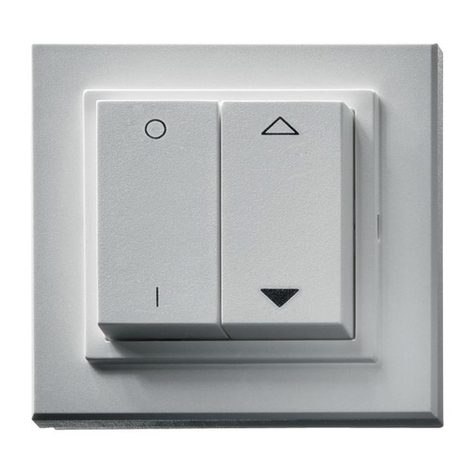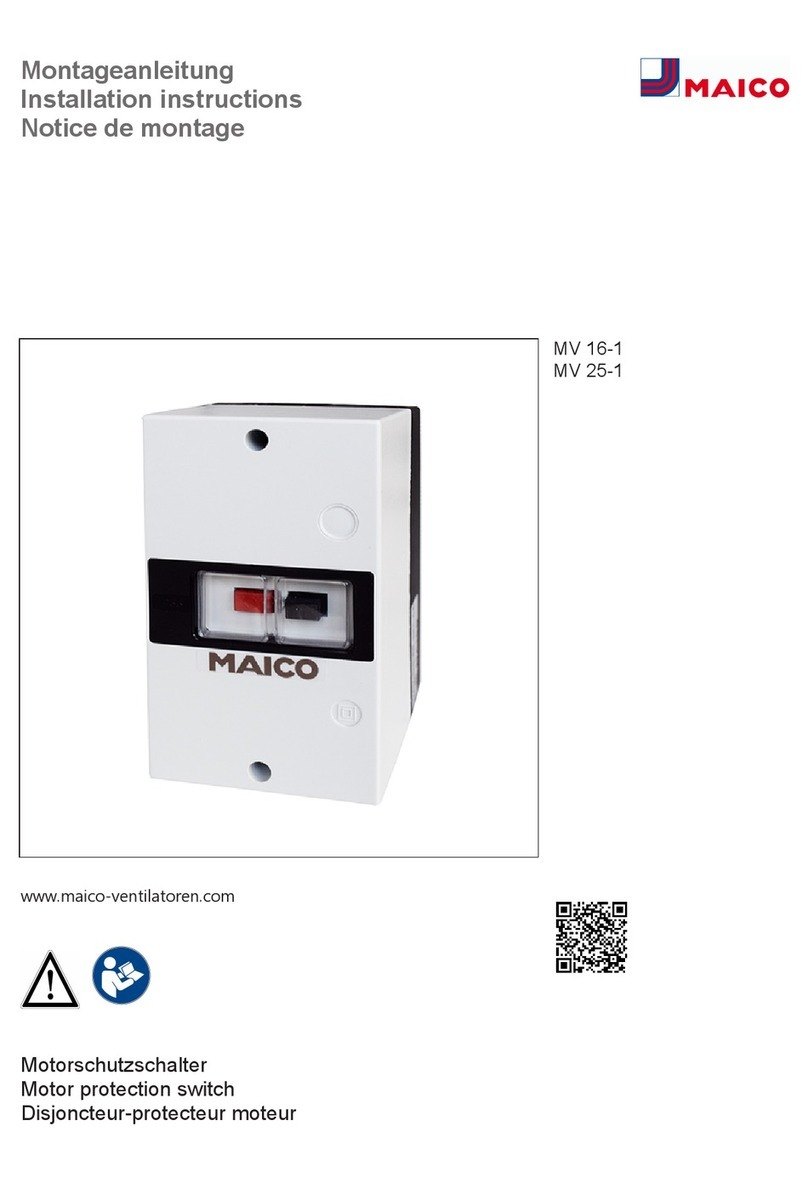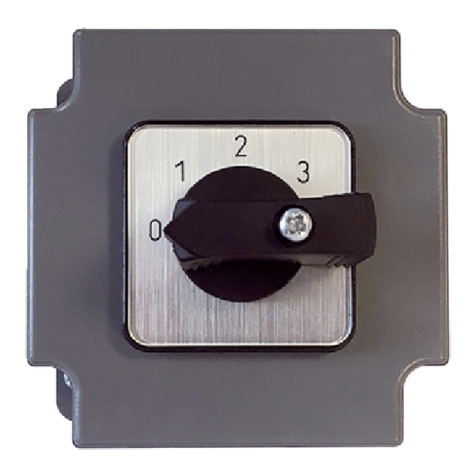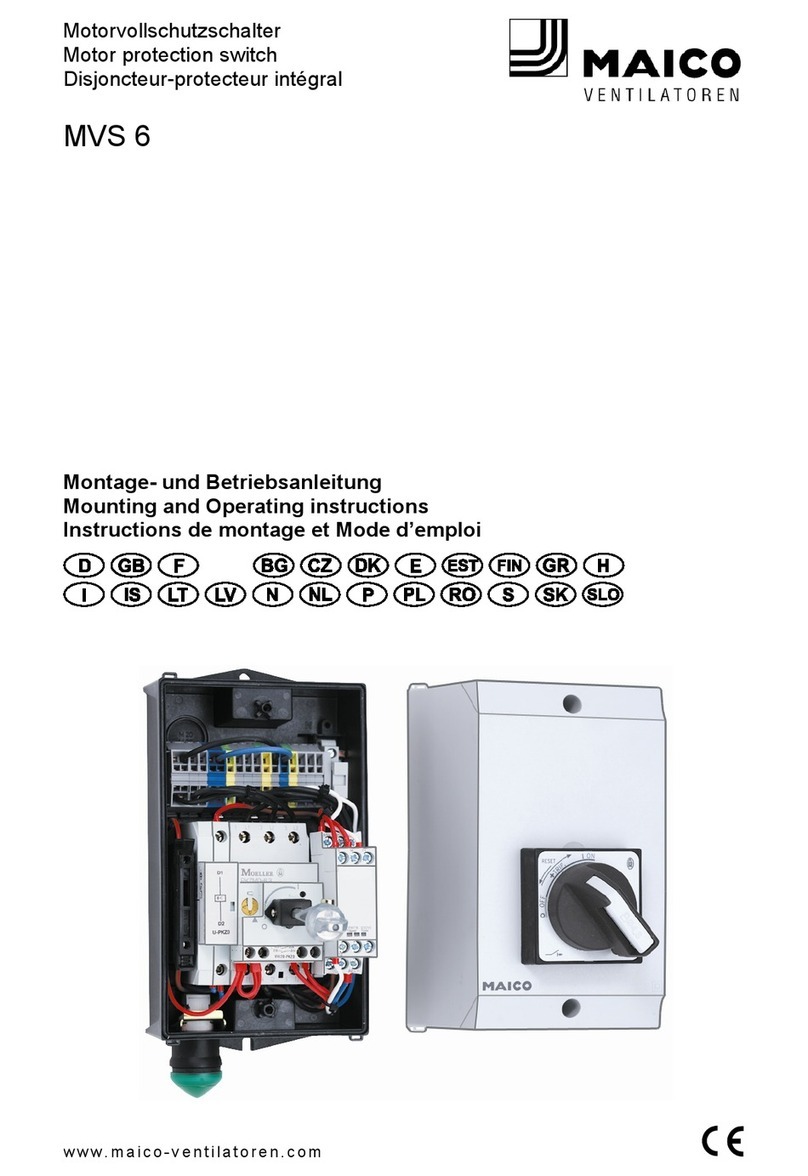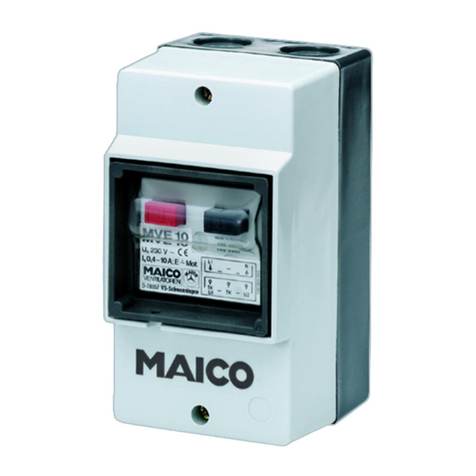
7 Caractéristiques techniques
9
DANGER Danger en cas de non-respect
des consignes en vigueur relatives aux instal-
lations électriques.
Respectez les règles de sécurité de la technique
électrique. Avant de retirer les caches de protec-
tion et d'effectuer des installations électriques,
couper tous les circuits d'alimentation électrique,
désactiver le fusible secteur, contrôler l'absence
de tension, sécuriser contre toute remise en ser-
vice intempestive et apposer un panneau d'aver-
tissement de manière bien visible.
Raccorder l'appareil uniquement à une installa-
tion électrique permanente. Le type et la section
de la conduite doivent être choisis conformément
à la norme DIN VDE 0298-4 → Caractéristiques
techniques.
Prévoir un dispositif de coupure du secteur avec
une ouverture de contact d'au moins 3mm par
pôle. Effectuer le branchement conformément au
schéma de branchement.
Utiliser exclusivement l'appareil à la tension et à
la fréquence indiquées sur la plaque signalétique.
Raccorder le conducteur PE et contrôler la
connexion. Vérifier le passage de la terre sur le
boîtier (VDE 0100-600, VDE 0105-100).
N'utiliser l'appareil qu'après son montage com-
plet.
Les modifications et transformations sont rigou-
reusement interdites et dégagent le fabricant de
toute responsabilité et garantie.
Ne pas mettre en marche un appareil endomma-
gé et en empêcher l'utilisation jusqu'à réparation
complète.
Le type de protection indiqué sur la plaque signa-
létique est uniquement garanti sous réserve d'un
montage conforme aux prescriptions et de l'inser-
tion correcte du câble de raccordement dans le
boîtier.
PRUDENCE Manipuler les matériaux
d'emballage avec prudence.
Conserver le matériel d'emballage hors de portée
des enfants (risque d'étouffement en cas d'inges-
tion).
7 Caractéristiques techniques
Tension de service 230V CA
Fréquence du secteur 50 Hz/ 60 Hz
Charge maximale
(charge inductive)
0,4 A
Charge maximale
(charge ohmique)
10 A
Préfusible max. 25A(gL)
Puissance dissipée
max.
env.6W
Antiparasitage (EN
55011)
VDE 0875, degré de
parasitage N
Section de câble max. 6mm²
Section de câble max.
TB/ interrupteur auxi-
liaire
2,5mm²
Type de protection IP55
Classe de protection II
Type de montage montage apparent
Poids 0,6kg
Dimensions (lxhxp) 80x135x96,5mm
Température ambiante -25…40°C
Pour des caractéristiques techniques supplémen-
taires → Plaque signalétique.
8 Montage, branchement élec-
trique
Consignes de montage
• Monter l'appareil exclusivement sur un support
sec et plan. Ne pas soumettre le boîtier à trac-
tion. Position de montage au choix.
• Sélectionner le lieu d'installation à l'extérieur du
trafic. Protéger l'appareil de l'exposition directe
aux rayons du soleil. Veillez à respecter une
évacuation suffisante de la chaleur.
Montage
1. Desserrer les deux vis du couvercle de boîtier
et déposer le couvercle de boîtier.
2. Retirer les deux équerres de fixation et sortir
l'insert d'interrupteur du boîtier.
3. Selon le nombre de conduites, détacher les
passages conduites au niveau des points des-
tinés à la rupture du boîtier et fixer les man-
chons de câble. Fixer les manchons de sorte
qu'ils soient bien appliqués sur le boîtier et en-
serrent fermement les câbles de raccorde-
ment.
4. Fixer la partie inférieure du boîtier au mur. Le
matériel de fixation adéquat est à fournir par le
client.
5. Amener les câbles de raccordement dans le
boîtier via les manchons, vérifier l'étanchéité.
6. Le raccordement de la tension secteur doit
être effectué au-dessus, celui du moteur en
dessous. Une permutation des côtés d'entrée
et de sortie n'est pas autorisée.












